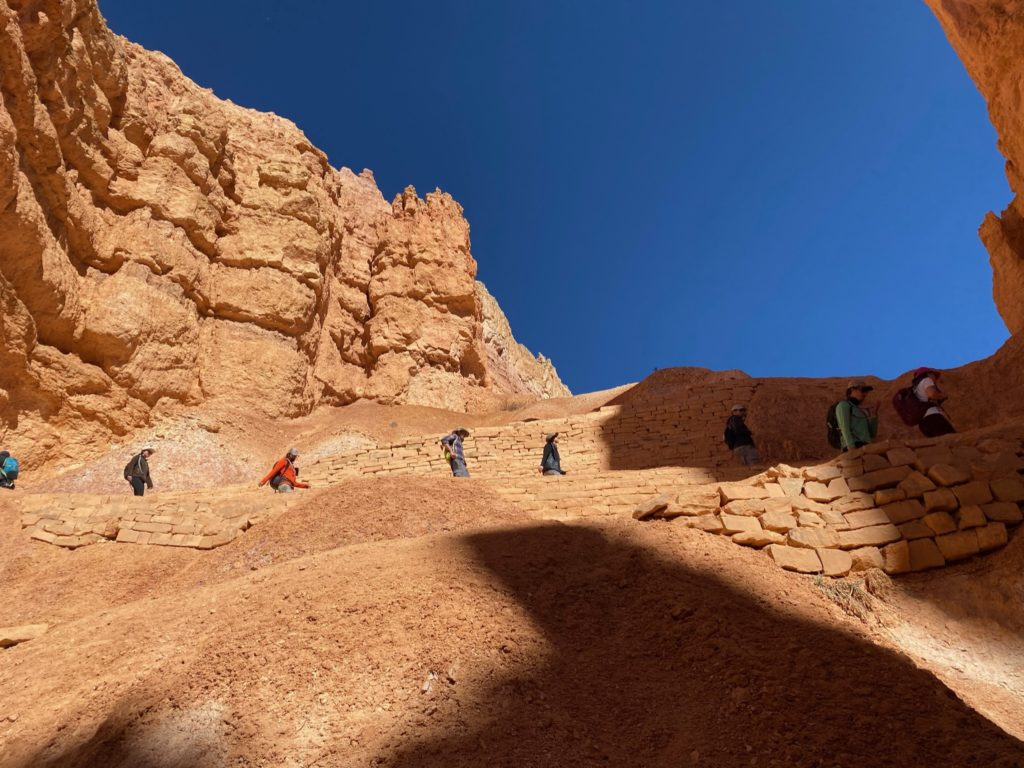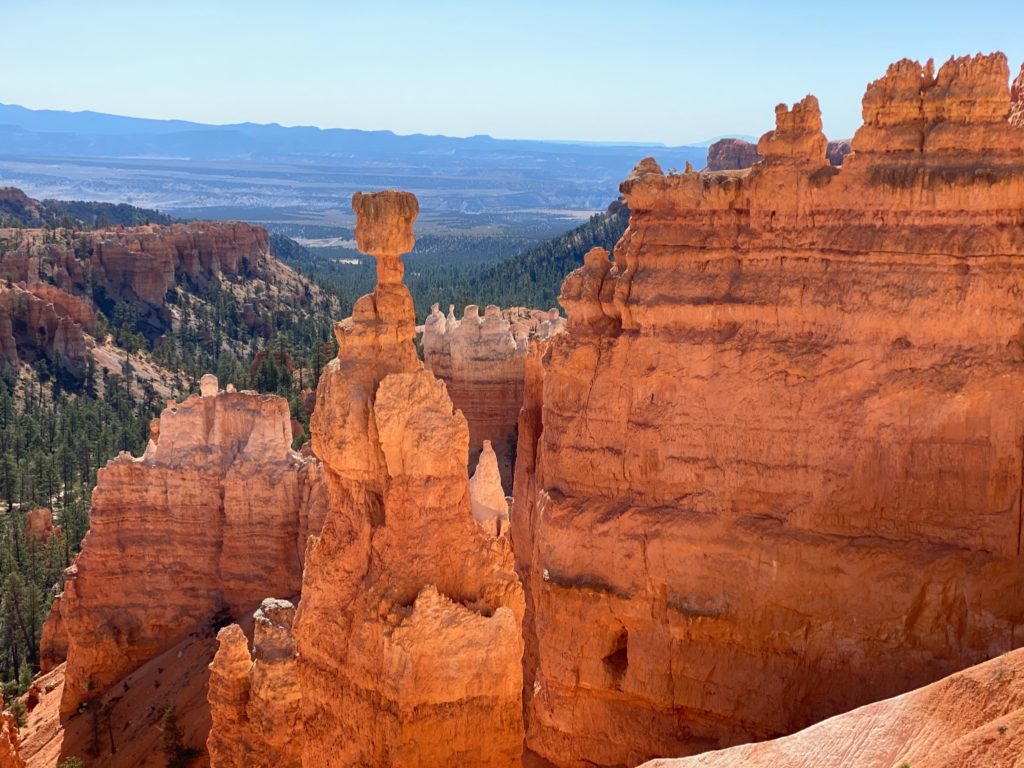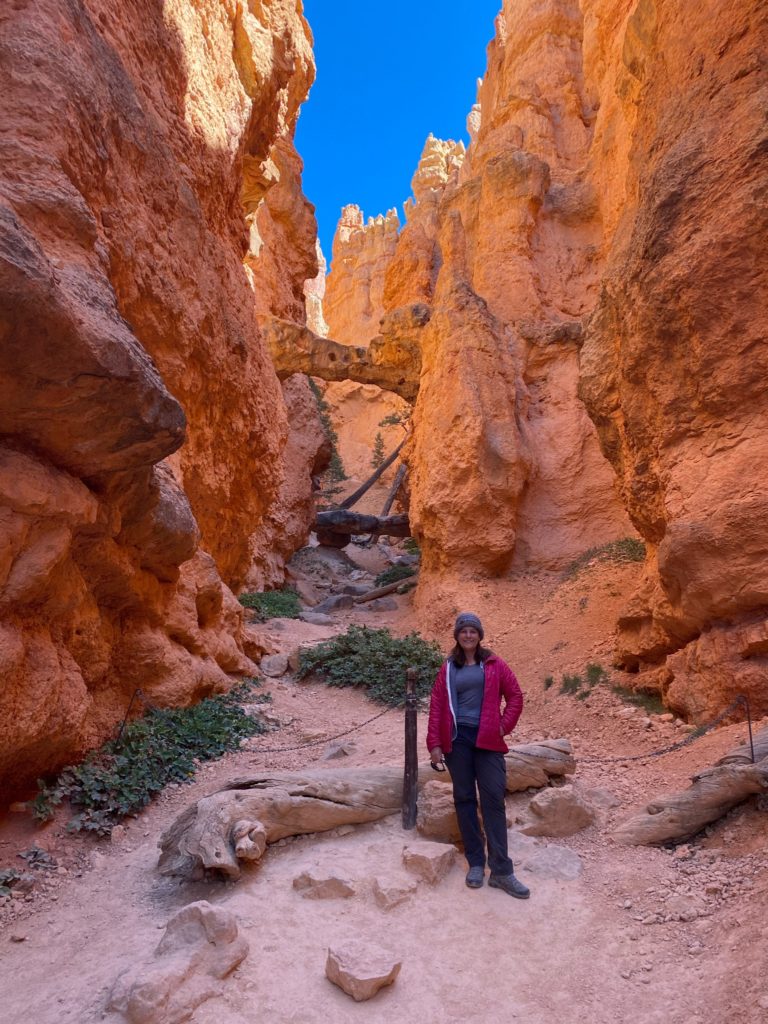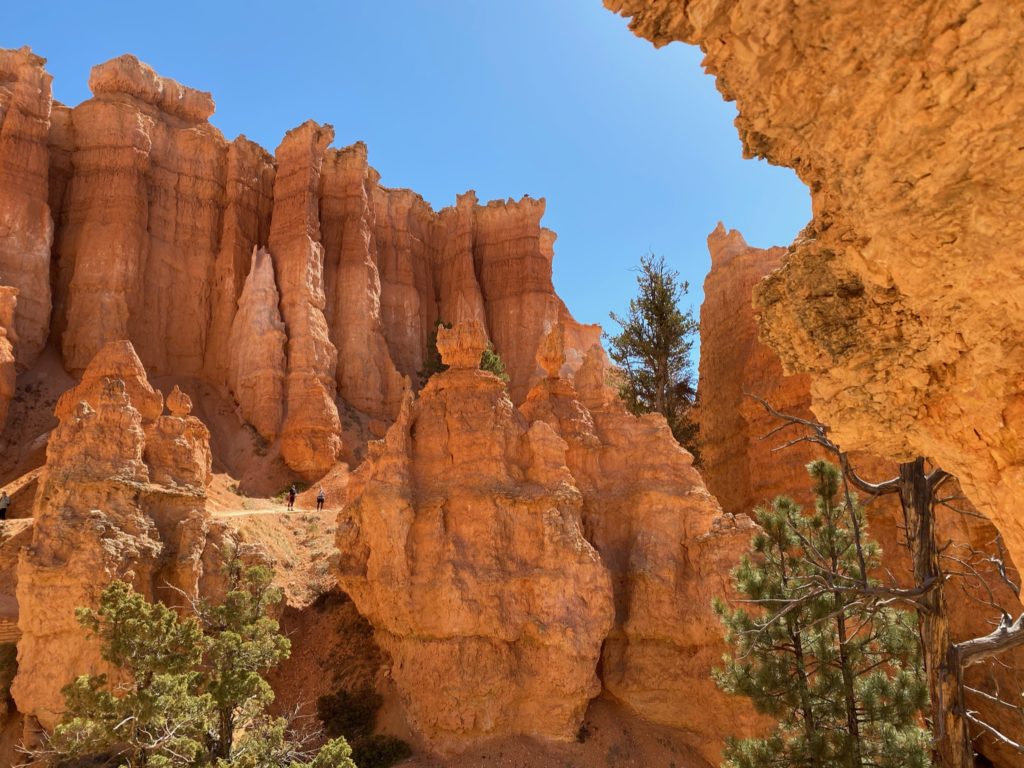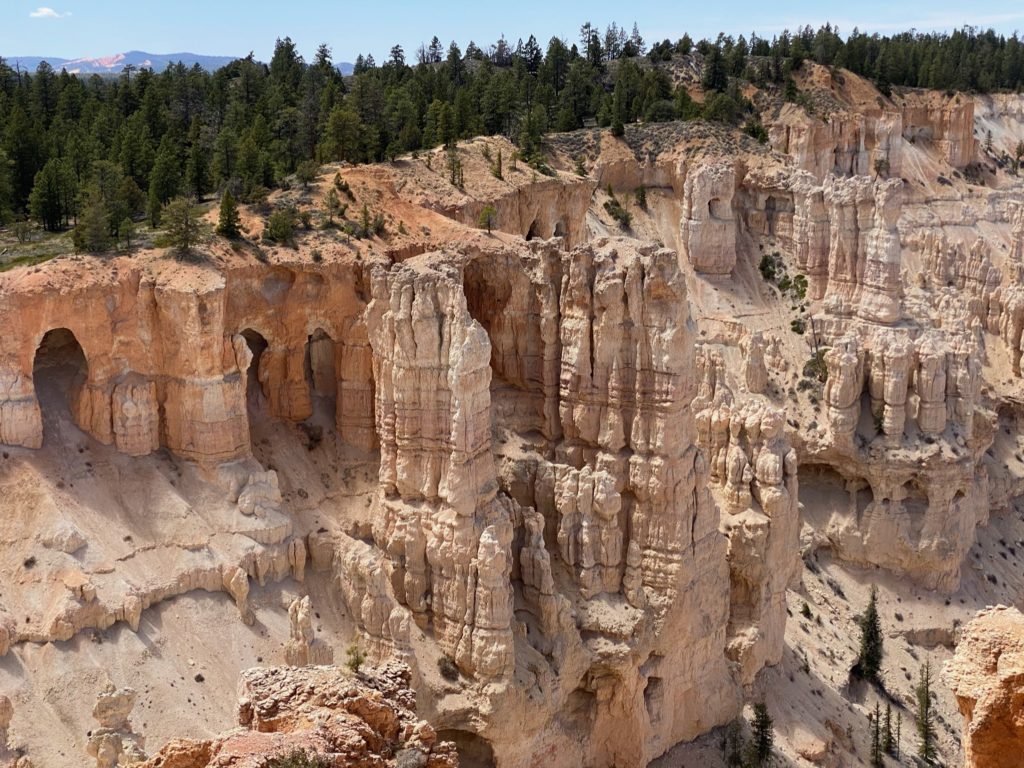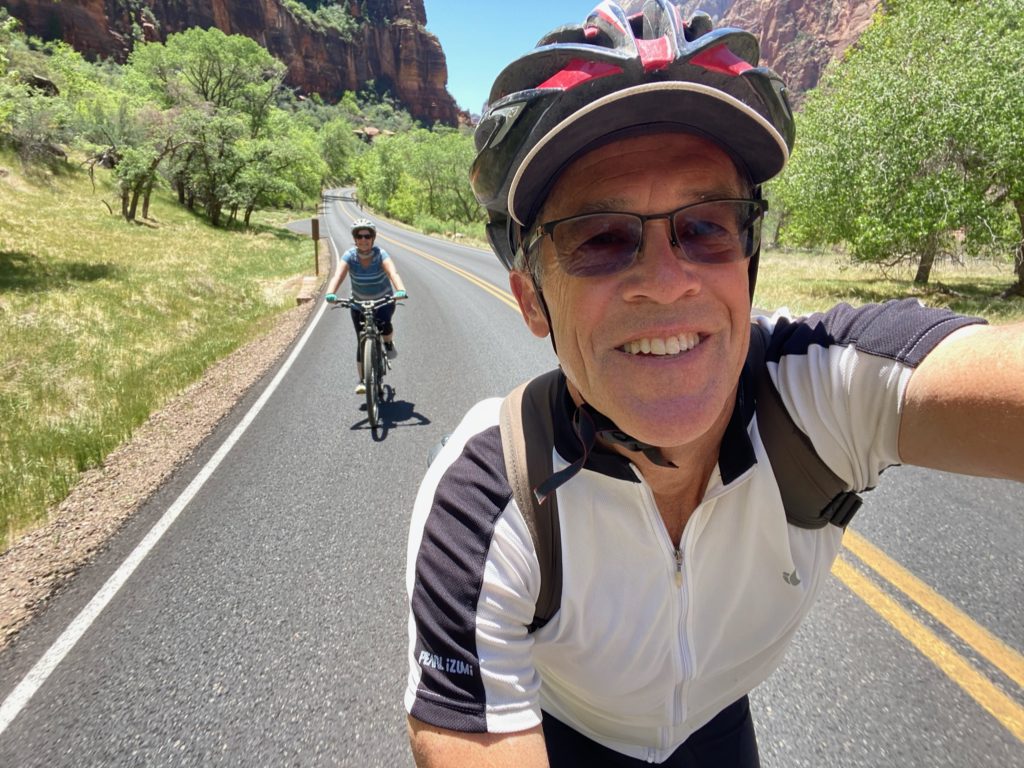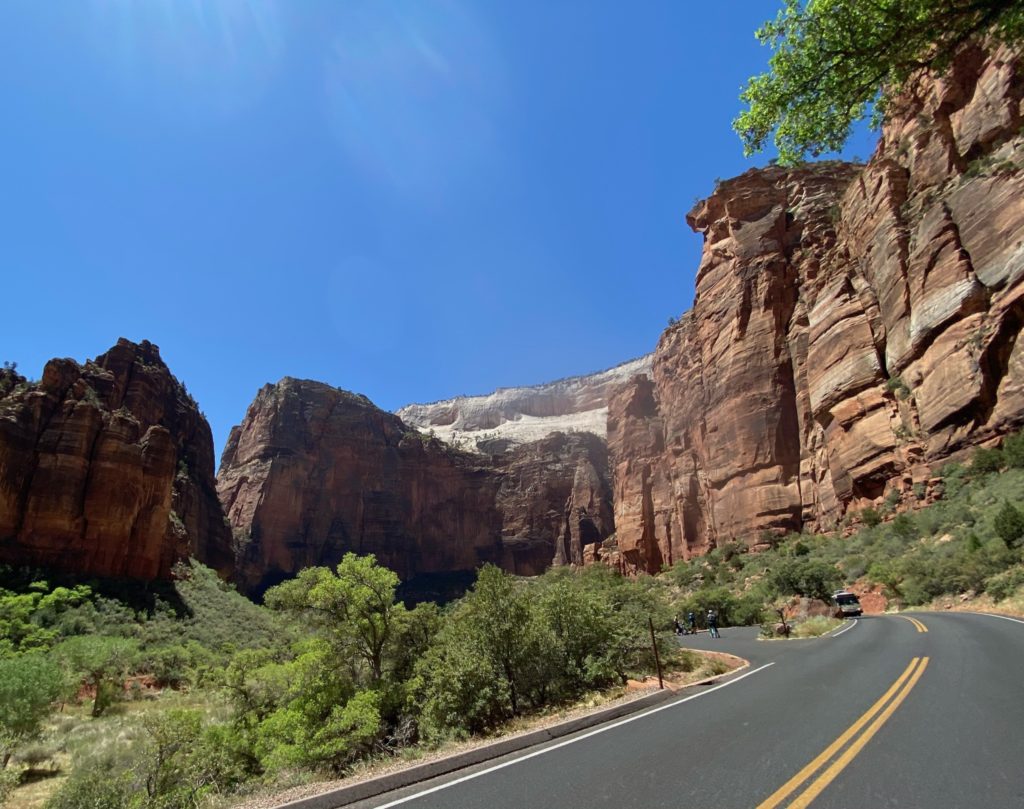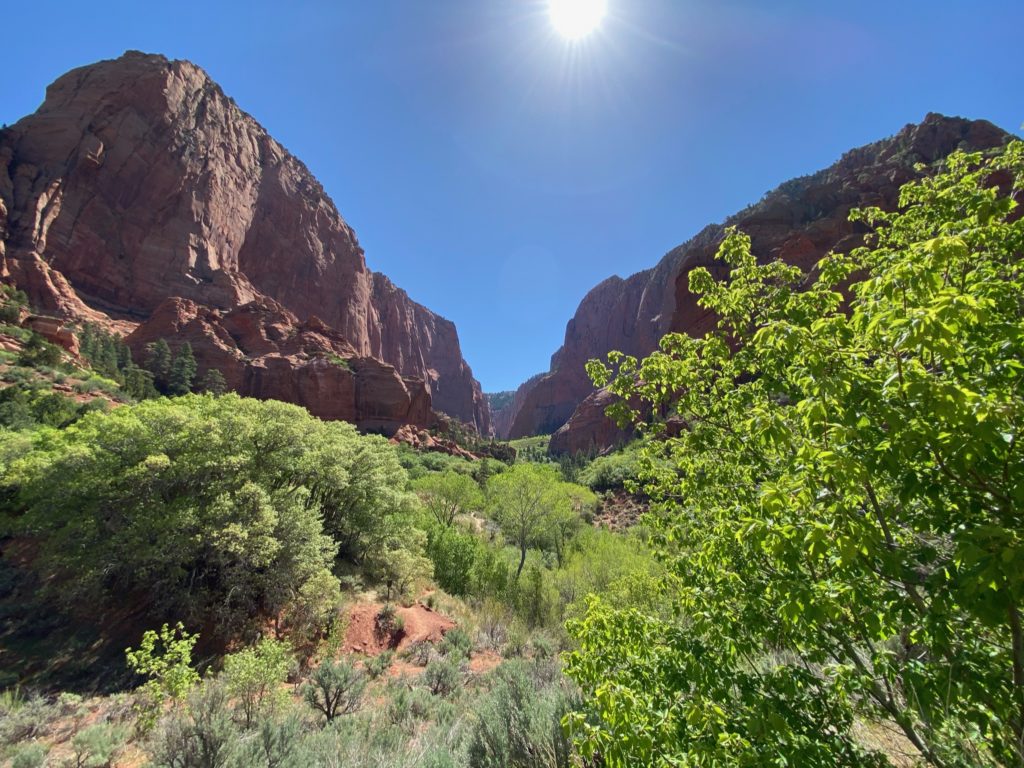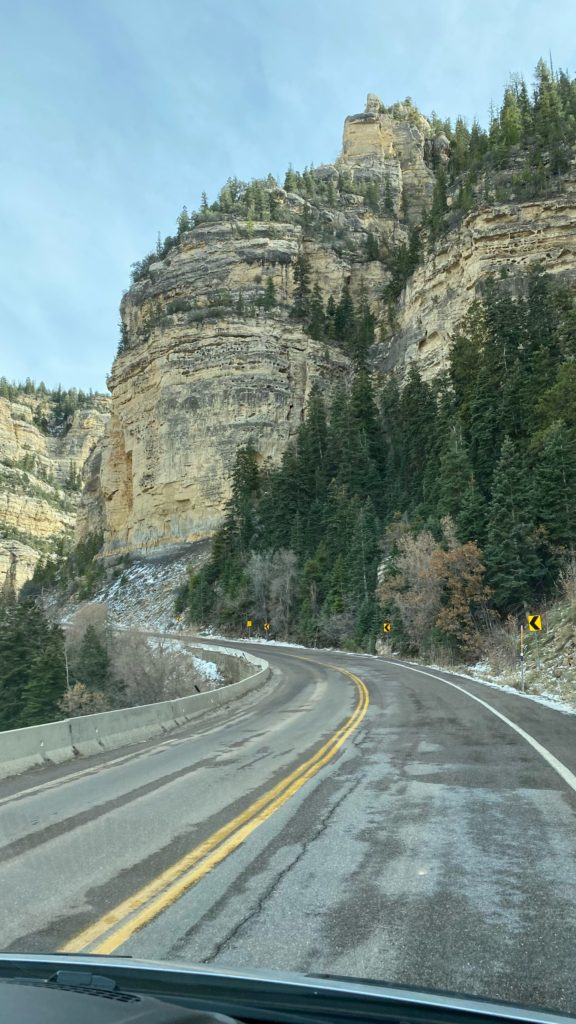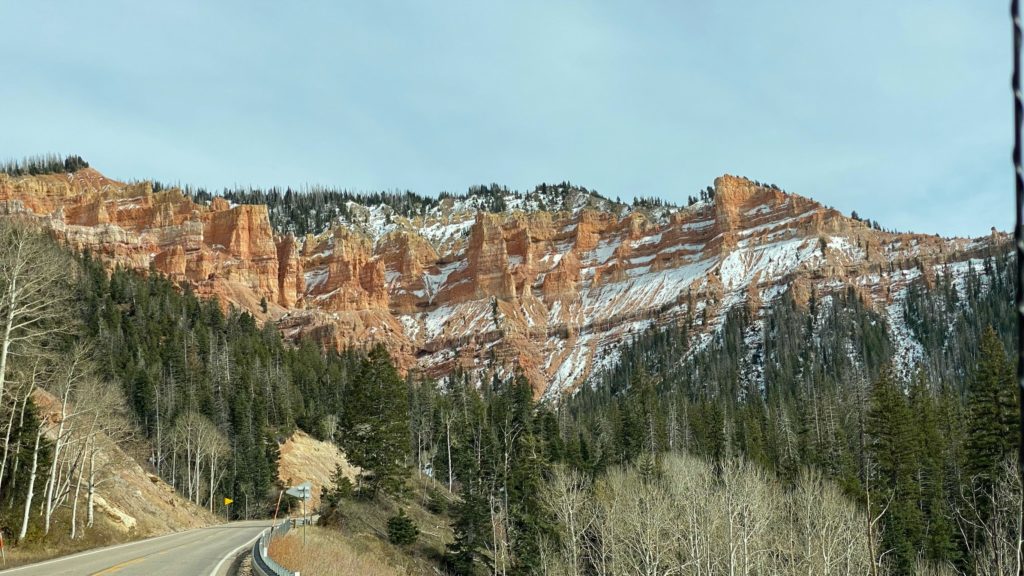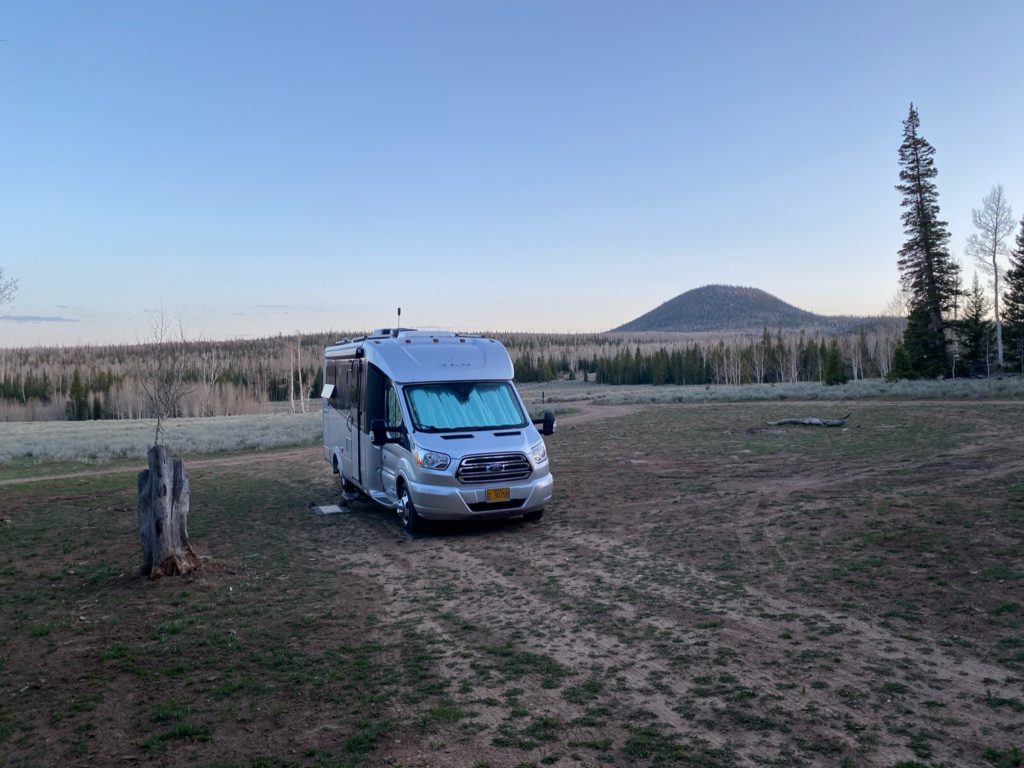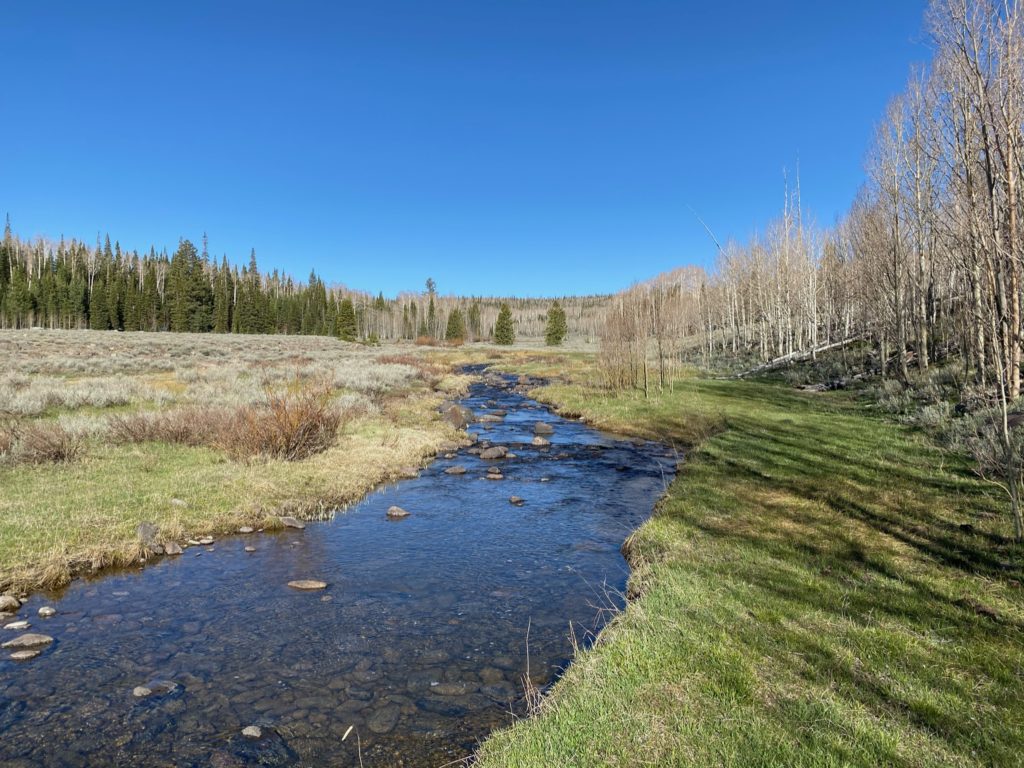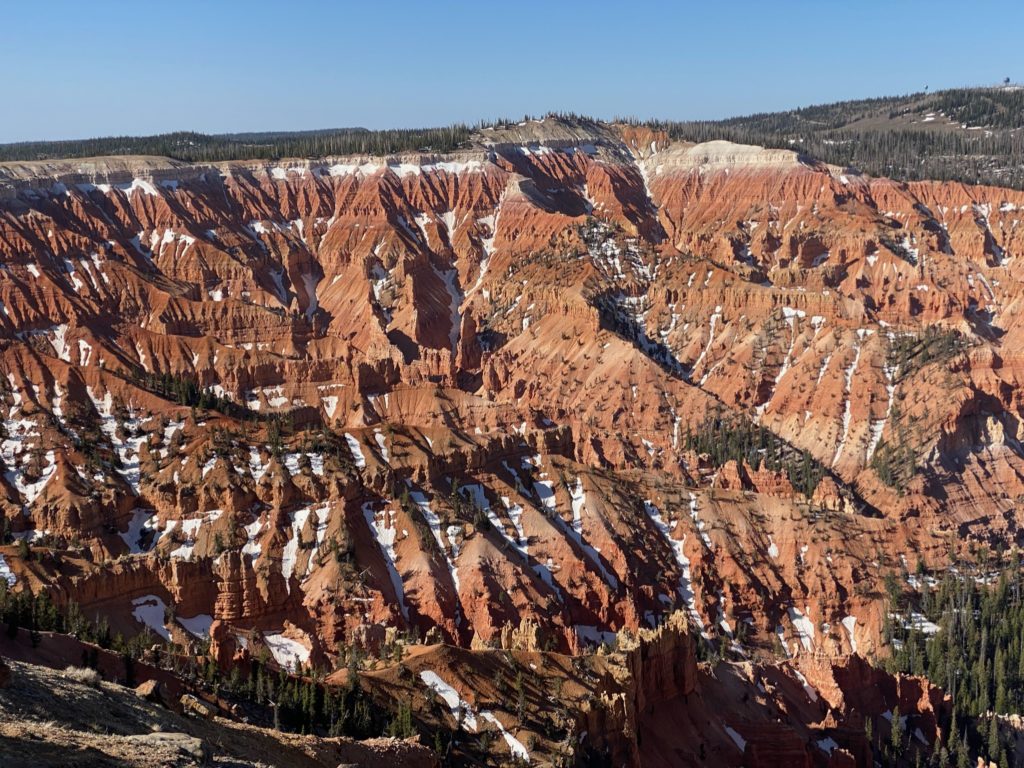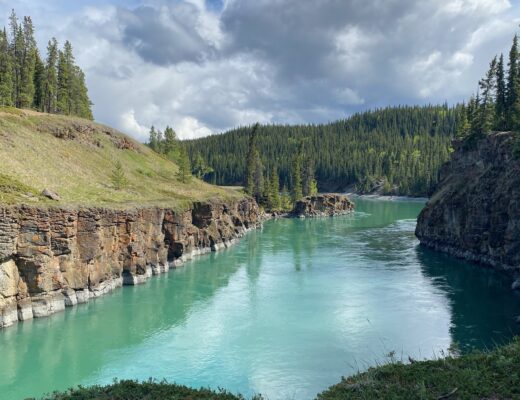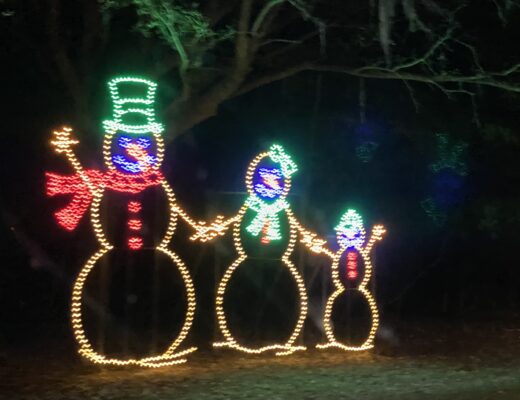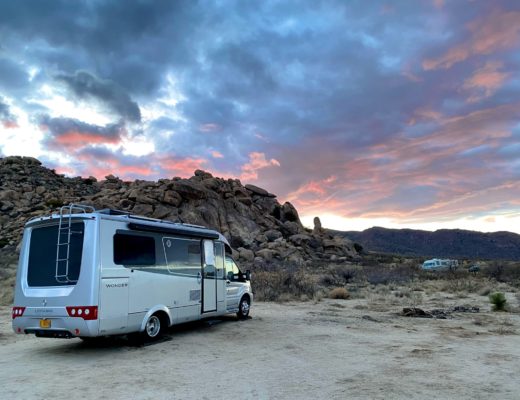In part 1 of this 3 part Utah series, we reviewed two lesser visited parks – Valley of the Gods and Natural Bridges (link here) – on the way to Canyonlands and Arches, 2 of the mighty 5.
In part 2, we discussed Kodachrome, Escalante, scenic byway Highway 12, and Burr Trail Road (link here) along with Capitol Reef, a 3rd mighty 5 member.
There are so many more parks and monuments that are in southern Utah that we hope to someday visit, but two more in the mighty 5 – Bryce and Zion will be discussed here. We also enjoyed Zion’s Kolob Canyon and Cedar Breaks National Monument (both outside of Cedar City, Utah).
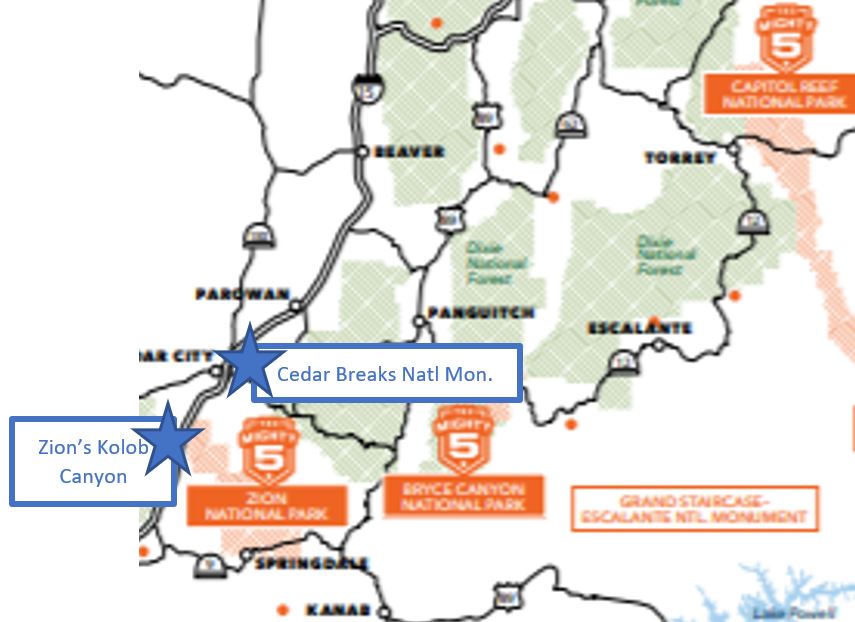

Bryce Canyon National Park
Although over 1.5 million visitors head to Bryce Canyon every year, it, surprisingly, is not one of the top 10 visited National Parks in the U.S. It is, however, one of our favorites.
The whimsical formations of limestone rock, created by erosion and rain, make it fun to explore slot canyons, windows, and, most notably, the tall, skinny spires called “hoodoos”. Bryce Canyon boasts more hoodoos than any other place in the world. Additionally, with elevations reaching over 9,000 feet, Bryce offers about 150 miles of visibility on a clear day. If that weren’t enough, it’s a great drive through park and even better if you have the time to hike.
With all that in it’s favor, what’s not to love?!
We’d driven through Bryce once before, but this time we camped at Sunset campground (very reasonably priced) and then fit in two hikes the next day:
- Sunset to Sunrise Canyon
- Rim Trail
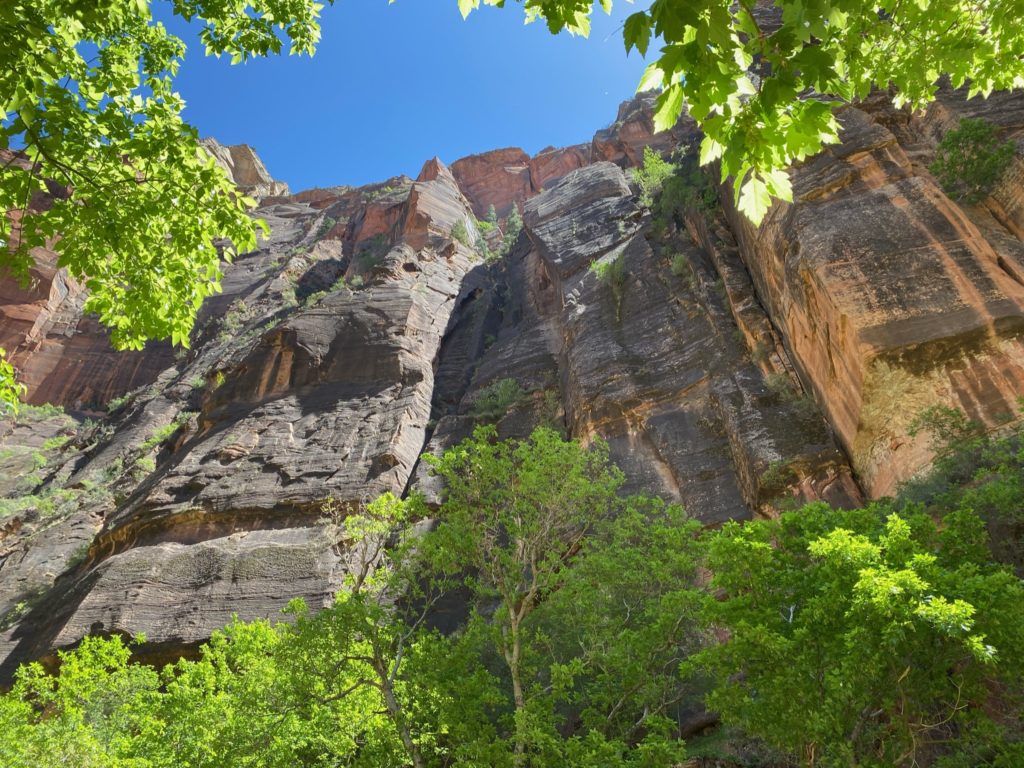
Zion National Park
Zion National Park is the third most visited national park in U.S. with 3.6 million annual visitors and for good reason. This park has some of the most breathtaking mountain panoramas you’ll ever see and is a playground for hikers, climbers, backpackers, and canyoneers.
If you enter from the east (coming from Bryce Canyon which is about an hour and a half away), you’ll pass through one of the greatest engineering feats of modern times, the Zion-Mt Carmel Highway ad Tunnel. The 1.1 mile long tunnel was completed in 1930 and when you emerge on the other side of it, it’s as if you’ve entered a magical world…Zion Canyon, which, while only 15 miles long, is up to 3,000 feet deep in places and the behemoth rocks that make up its walls seem to represent every known color.
The Virgin River and its tributaries run through Zion and continue to carve and shape this wonderful canyon. On average, the Virgin River removes 1 million tons of sediment (mostly during flash floods in the area) that result in the canyon widening and the river channel deepening.
A couple more facts; with so many visitors, Zion has prohibited cars and implemented a reservation system for the shuttle buses that move up and down the canyon carrying people to trailheads. If you didn’t make a reservation or couldn’t get one, Zion allows you to ride your bike into the canyon, which is how we got around both days. Bike rentals are available in Springdale, the town at the south entrance to Zion, which is the most popular entrance. There is also paid parking throughout the town of Springdale which was a good thing since the official NP parking lots were completely full by 10am each day during our visit.
We rode our bikes and then hiked Angel’s Landing before the permit/lotto system was put into place for this hike. This trail is considered one of the most dangerous National Park’s trails in the U.S. The last 1/2 mile of it requires the use of chains and traverses a spine that has 1000 foot drop offs on either side. I skipped the last 1/2 mile as my fear of heights is just too great, but Doug conquered the full trail and was rewarded with wonderful 360 degree views. More photos and videos below.
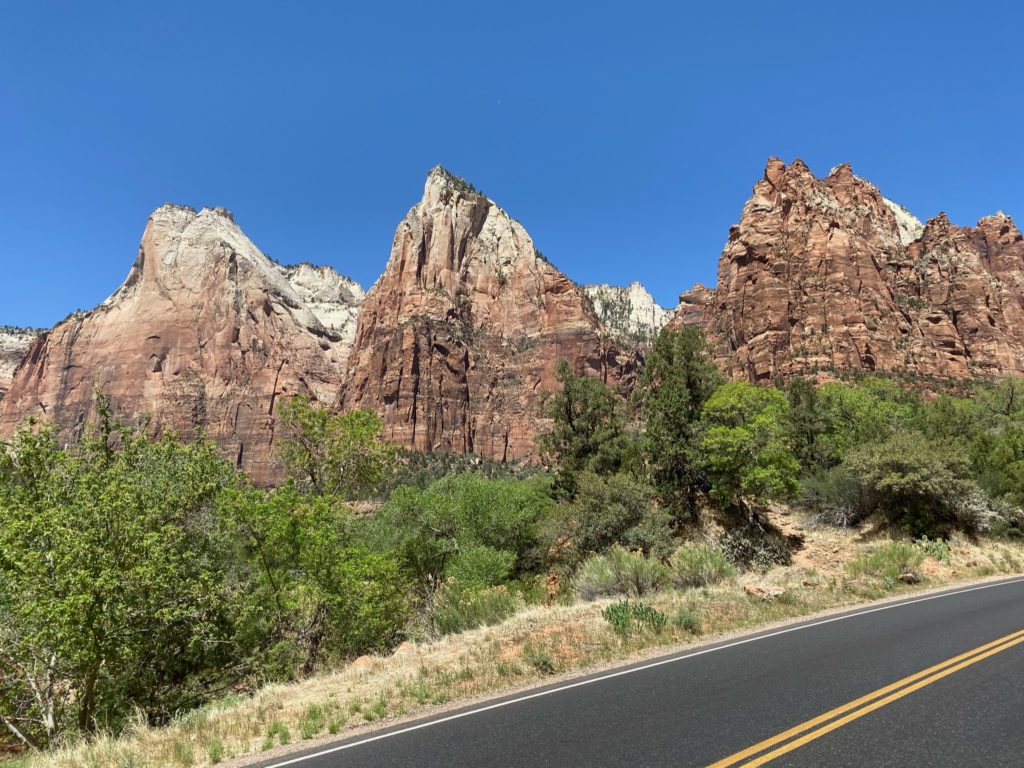
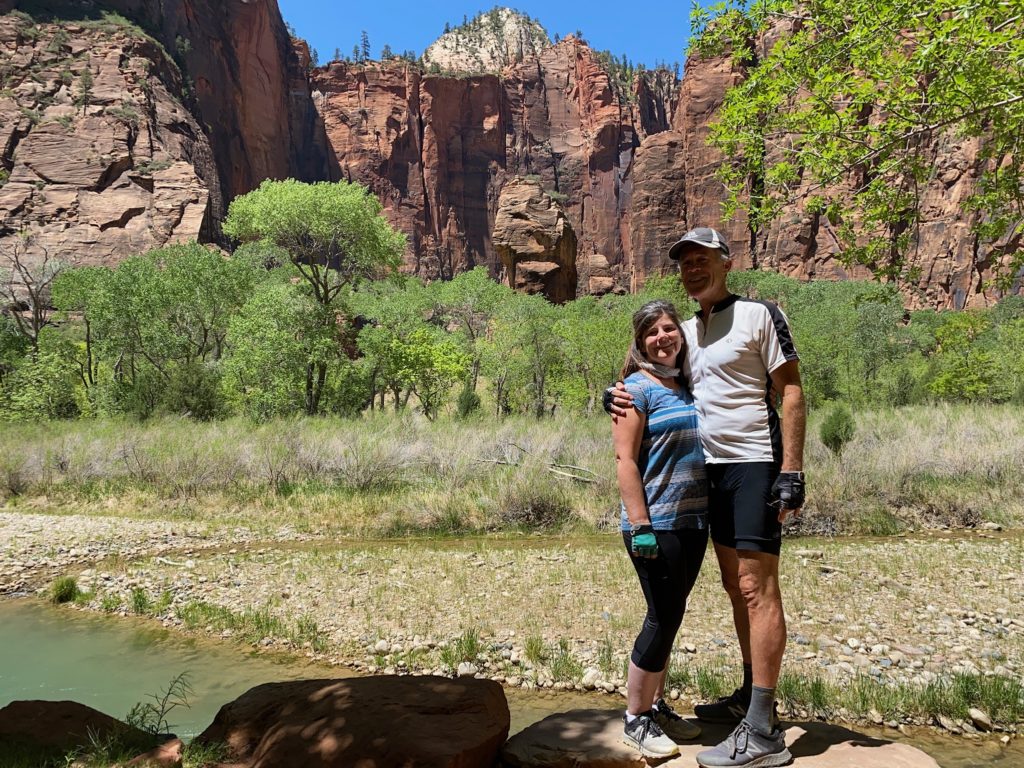
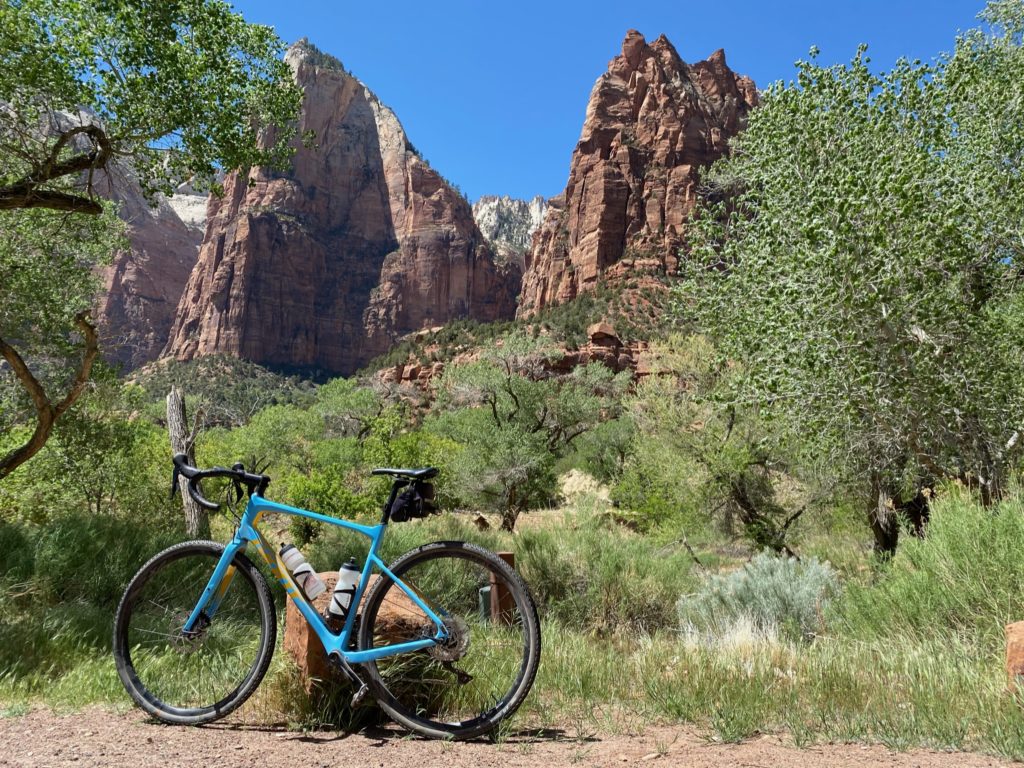
Cycling Zion Canyon

Angel’s Landing Trail 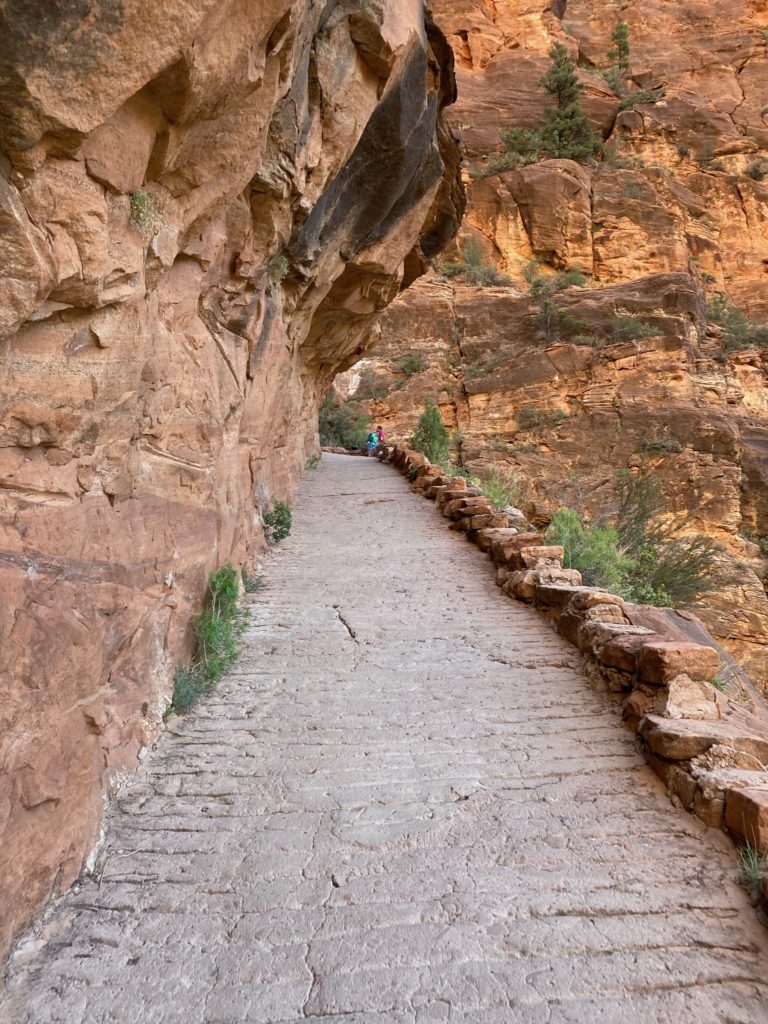
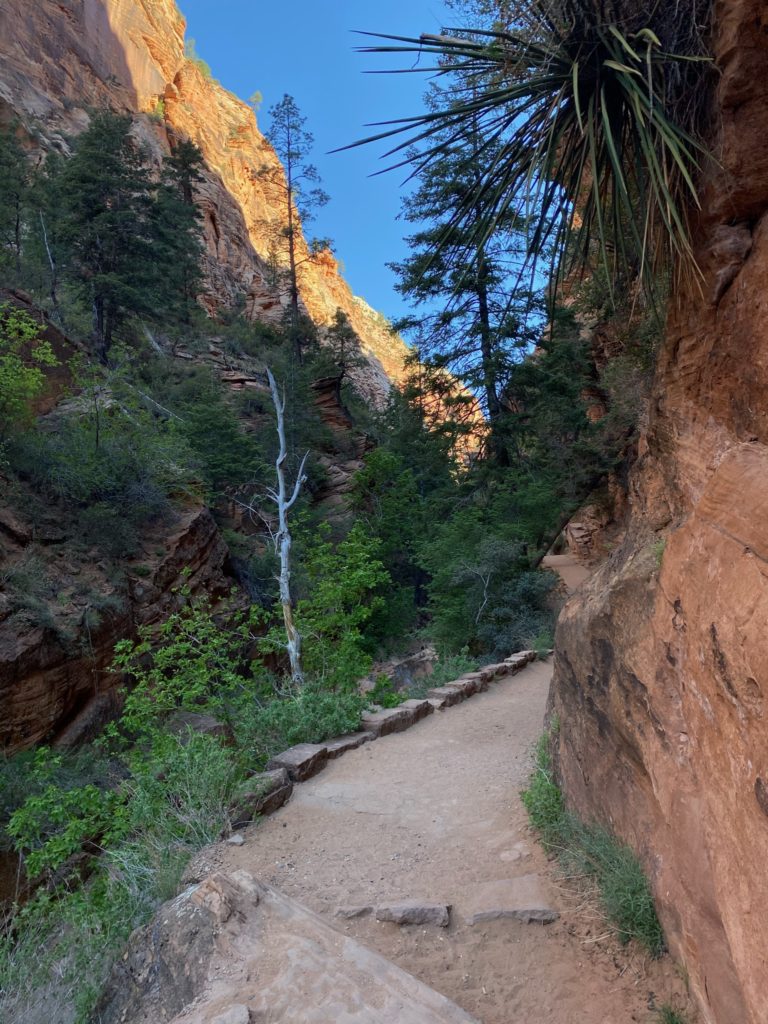
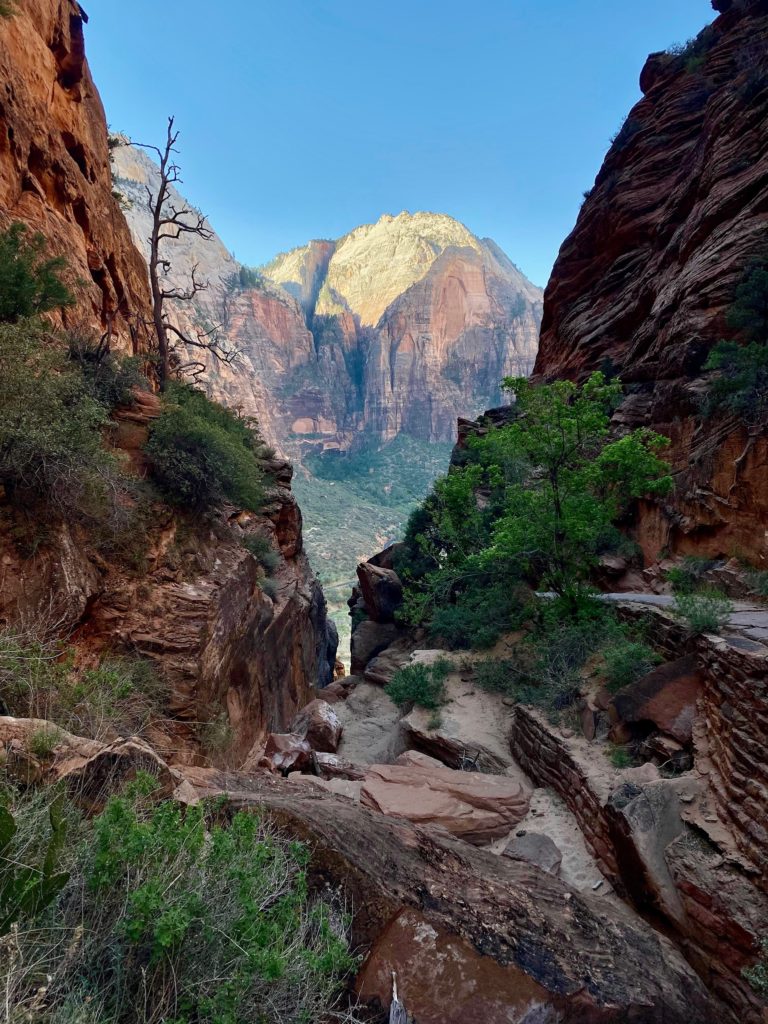
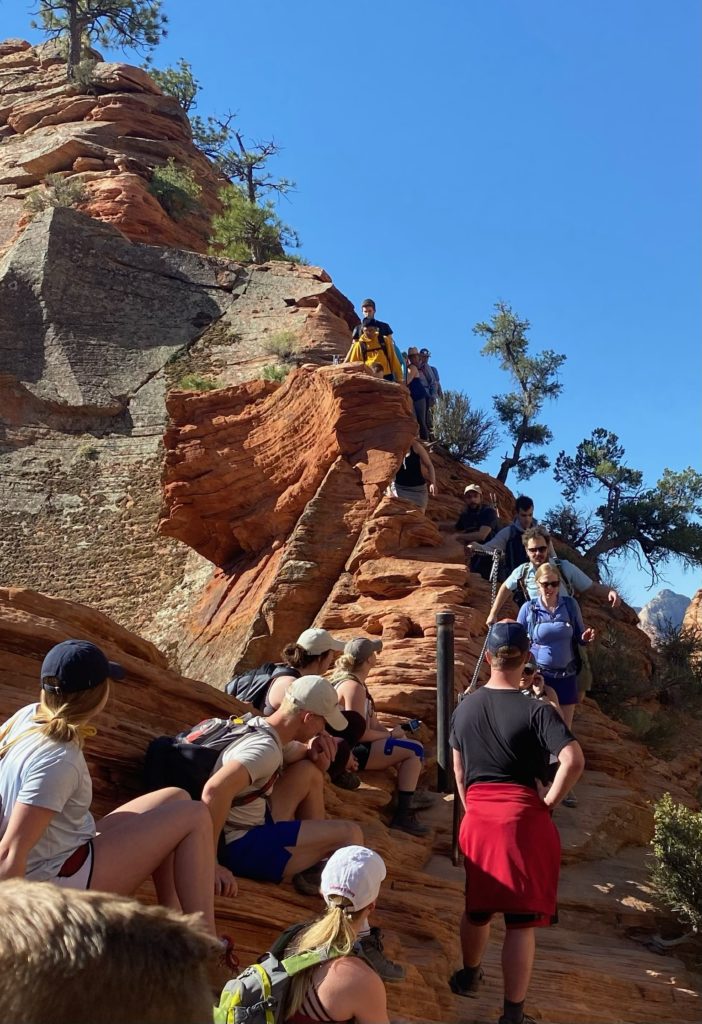
The start up the spine 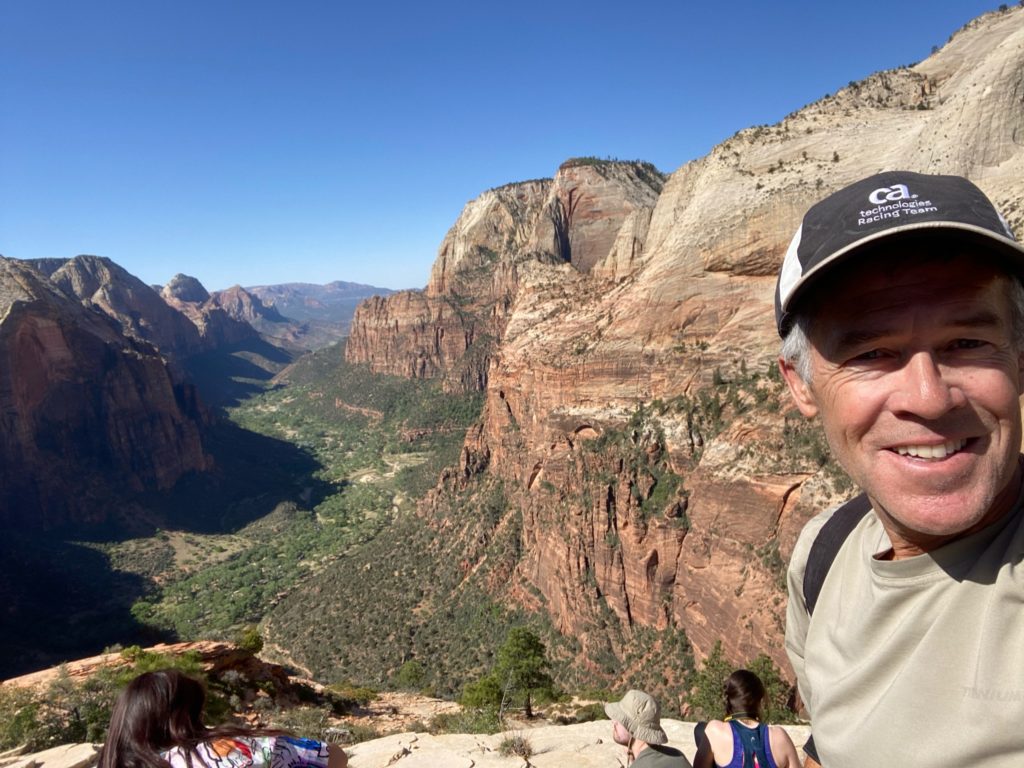
360 degree views from the top 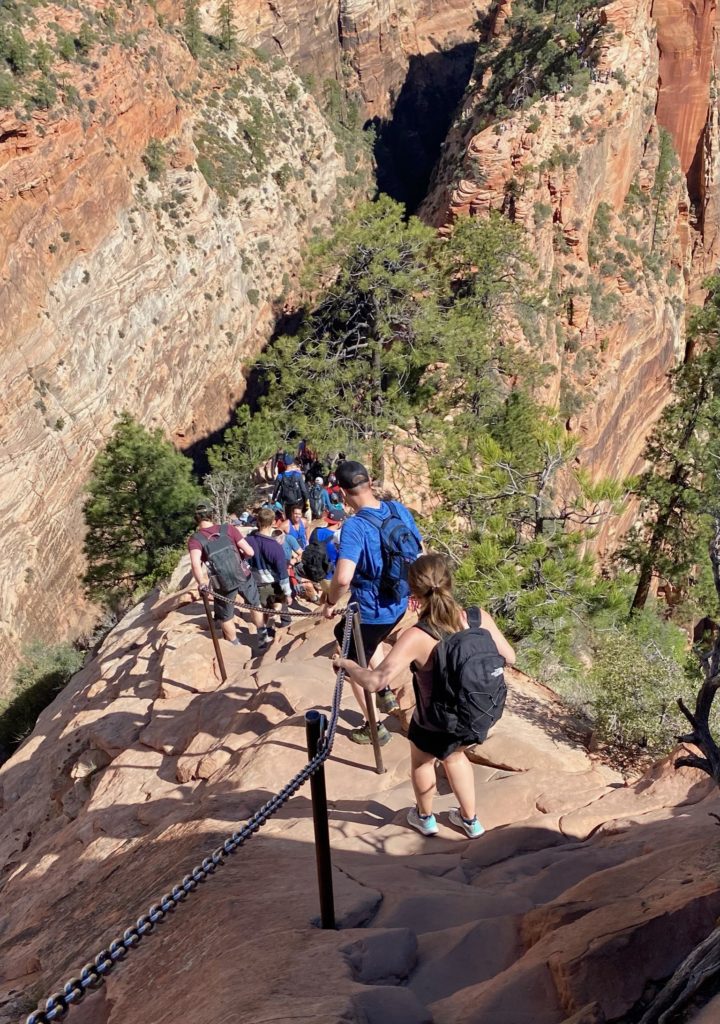
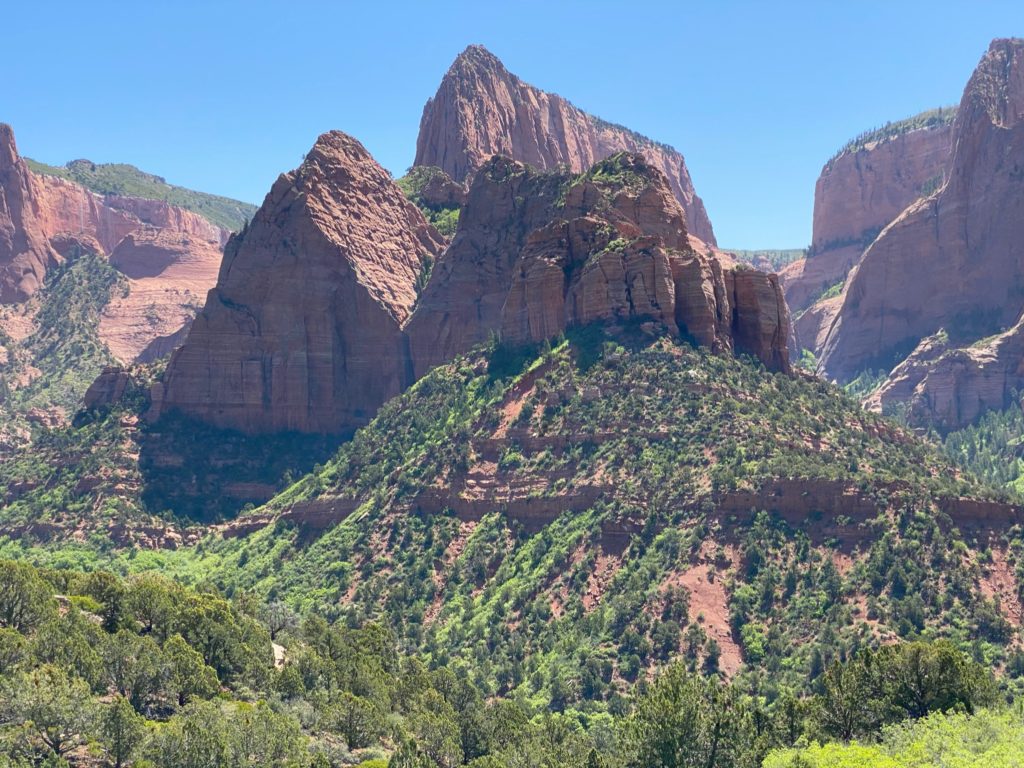
Zion’s Northwest Entrance – Kolob Canyon
Kolob Canyon is 40 miles north of Zion Canyon and just 17 miles south of Cedar City, Utah. If you have the time to visit the area, do so! This 5 mile scenic drive provides wonderful views of crimson canyons that should only exist in fantasy books.
With less than 500,000 visitors annually, you can find the serenity and connection to nature you’re looking for.
I wish we’d had the time to hike here as there are over 20 miles of hiking trails beneath these soaring Navajo standstone peaks and some hikes promise cascading falls.
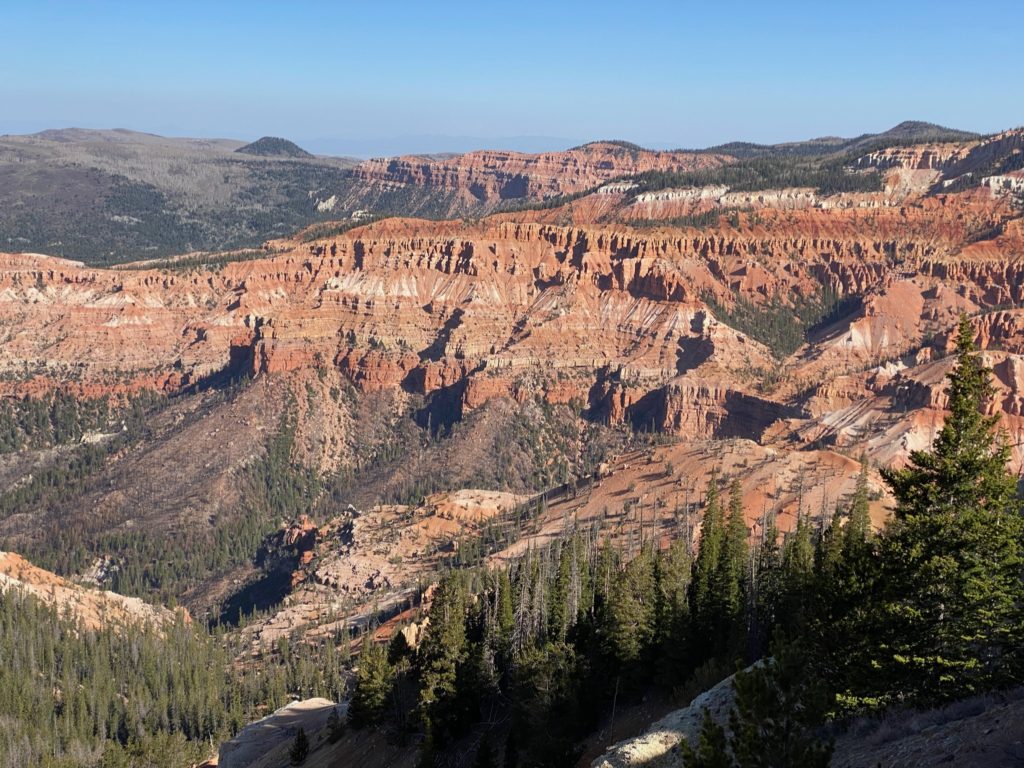
Cedar Breaks National Monument
Cedar Breaks National Monument lies just 23 miles east of Cedar City. The drive up from Cedar City is gorgeous. The National Monument is a natural amphitheater, stretching across 3 miles, with a depth of over 2,000 feet. The elevation of the rim of the amphitheater is over 10,000 feet above sea level and offers Bryce-like hoodoo views.
There’s so much to do in southern Utah that even with a little over three weeks in the area, we only got a taste of what it has to offer. That taste though is undeniably sweet and I could see this being a place that we could return to year after year.


